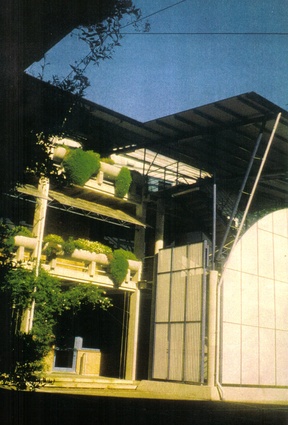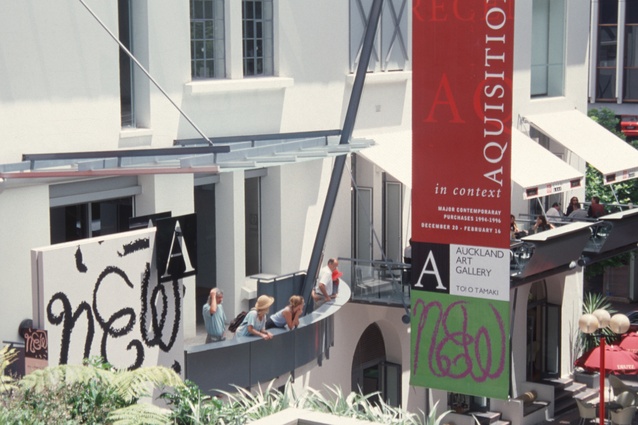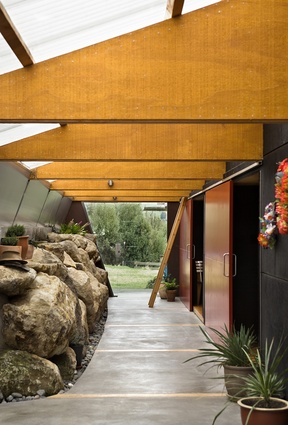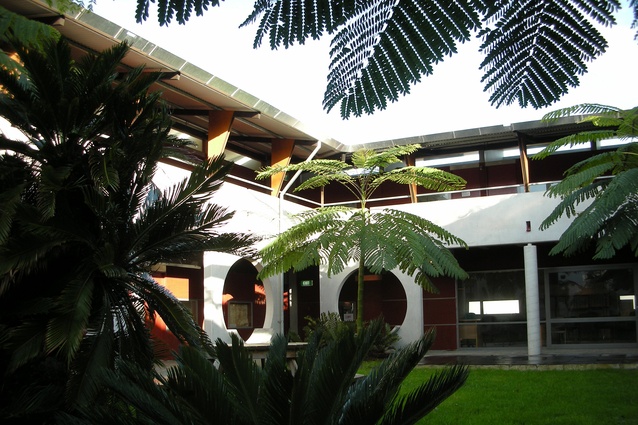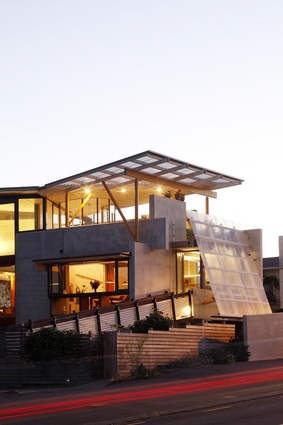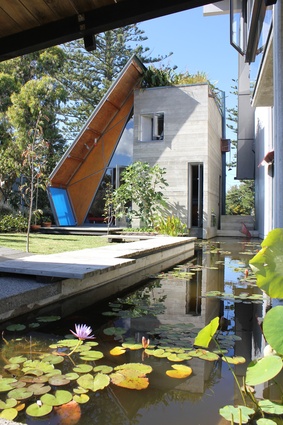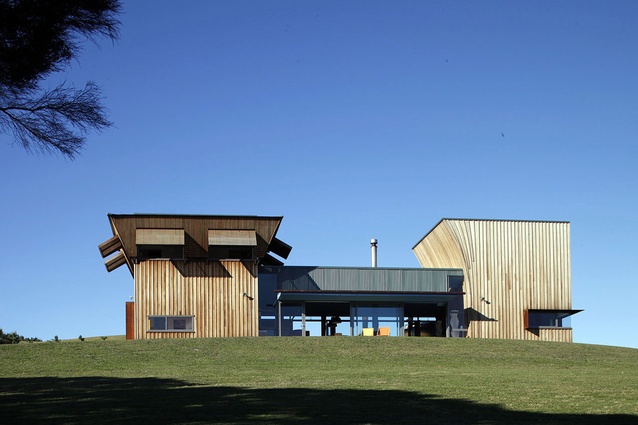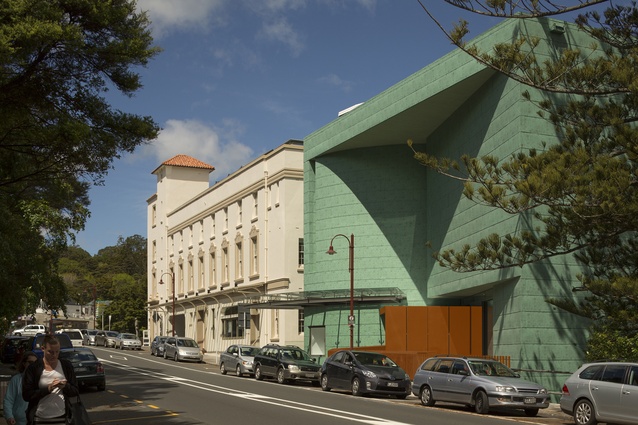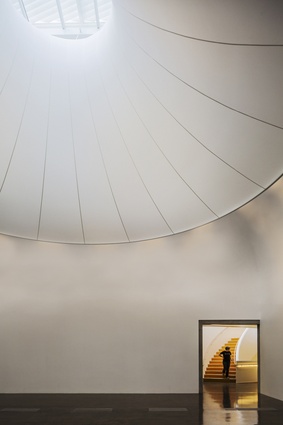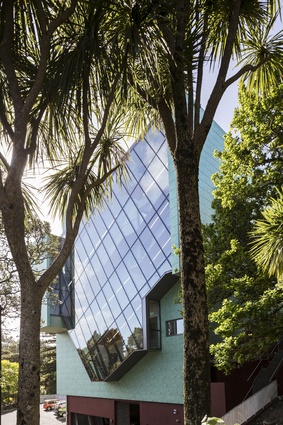Urban advocate: Julie Stout
Amelia Melbourne-Hayward talks to ‘activist architect’ Julie Stout, who was recently honoured as a Distinguished Fellow by the NZIA. Julie started her practice Mitchell & Stout Architects with partner David Mitchell in the late 1980s. Julie is president of lobby group Urban Auckland and, alongside architecture, is highly interested in urban design and in creating a better built environment for Auckland City.
Amelia Melbourne-Hayward: Did you always know that you wanted to be an architect?
Julie Stout: I grew up in Palmerston North, which is hardly an architectural epicentre. My dad was a deer culler and then trained and worked as a draftsman. At 14, I remember coming home from school and announcing that I was going to be an architect.
AMH: That’s very young. At 14 I don’t think I knew that there was such a thing as architecture!

JS: I don’t know how I knew either, it was quite a big word for me. My mother tried to tell me that I should do drafting first or something that I could fall back on, which of course just made me more determined.
I moved up to Auckland for architecture school after doing an intermediate year at Massey. The first place I stayed was on Cheltenham Beach. I arrived on that beach and gazed at Rangitoto island. After all those years in Palmerston North, I was in heaven. I’ve loved Auckland ever since.
AMH: Who did you first work for post-university?
JS: I initially worked with Cook Hitchcock Sargisson [now Cook Sargisson Pirie & Williams] and they were very supportive of young people, especially Marshall Cook. As a student, I thought I’d be doing the dishes, instead I was soon working on house alterations. A couple of years after graduating I went and worked in Fiji with Murray Cockburn. It was my first experience of the tropics, and another culture – it was very beguiling!
AMH: Do you think that those early experiences in the Pacific influenced your style or how you looked at architecture?
JS: Absolutely. When it’s so hot, you want these lovely dark, cool spaces. I learnt a lot about how to treat light and how it reflects off the ground into places. Experiencing something so different from what you’re normally exposed to makes you really question where you’re from.
It was also in Fiji where David [Mitchell] and I saw an overseas yacht come sailing in, put the anchor down and the people onboard dive off and go for a swim. I said, “Let’s do that!” From then on we’ve always had these parallel worlds: sailing and architecture.
AMH: I’ve done quite a bit of sailing and it’s a very special and unique lifestyle. Do you have a boat moored somewhere?
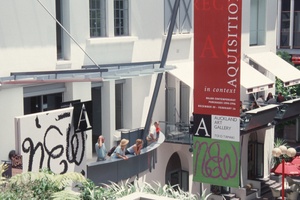
JS: We sold our 35ft boat that we sailed all the way to the Mediterranean but on returning to New Zealand, we ended up buying half of our friends’ 42ft yacht. It’s in Westhaven so we take turns on it over the summer.
AMH: That sounds great. In the 1980s, you became involved in urban activism alongside working in architecture. What ignited that passion?
JS: The bigger picture of how things fit together has always interested me, as well as the architecture and context. In the late 1980s David and I were living in Courtville Apartments, a 1929 Sinclair O’Connor building in the CBD that the then-Labour government wanted to sell off. There was a big battle by the tenants, including a number of architects, to save the building, which we ended up winning. That’s when I first became interested in actively taking care of the built environment.
The ‘80s was a really tough period for heritage buildings in Auckland. They were undervalued with precious few mechanisms to protect them. Very few people lived in the inner city then – it was a ghost town in the weekends – so there was no feeling of belonging in the city.
AMH: In 1989, you and David started Mitchell & Stout. What prompted that?

JS: David and his partners had just split up and he had some biggish architectural work on – it made sense to join forces. Architecture is a good profession for husband and wife partnerships to work together. We’ve been extremely lucky to have some fabulous clients.
AMH: At the same time as working at your practice, since 2002 you’ve been actively involved in the processes shaping the urban environment of Auckland City, helping instigate the Mayoral Task Force on Urban Design in 2005. Tell me a bit about how that got started?
JS: After a long overseas stint of working and sailing in the 1990s, we came back to Auckland in 2000 and I was struck at what a shabby state the city was in. Through architects/urban designers Amanda Reynolds and Graeme Scott, I became involved in the Urban Issues Group at the NZIA. We were trying to work out how to promote urban design and the fact that buildings aren’t just objects, that the space around them is important, especially in the city.
In 2004, Dick Hubbard became mayor of Auckland City. He had picked up our mission on urban design for the city and was keen to make a better city for people. He instituted the Mayoral Task Force on Urban Design, which allowed a really good cross-discipline discussion on what was important for Auckland. It set down some key points for change and pathways for the council, like instigating an urban design champion role. At the time, Auckland Council only had 1.5 people employed in urban design – a lot has changed in a relatively short time!
AMH: How did you balance working full-time with this advocacy work?
JS: Well, I did my architecture work during the day and then at night went to meetings! If I had time to myself, I think I wouldn’t know what I’d do with it. But after years of sailing the sea thinking ‘what the hell am I doing out here’, it was great to have something to throw myself into.
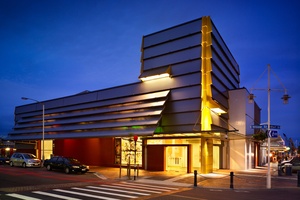
AMH: That’s true, sailing does put life into perspective when you can’t do anything apart from read and cook. You’ve also been involved behind the scenes of the Unitary Plan, haven’t you?
JS: Yes, it has been an extraordinary time in Auckland’s history. There’s been a real shift in the way we see the city and the Unitary Plan is important in setting that up. There was a diverse group of us in the NZIA involved in submissions for the plan, led by David Gibbs (of Construkt), who was Chair of the Urban Issues Group at that point. We also worked with lawyers and planners as it was invaluable to get different viewpoints.
AMH: What do you think of the outcomes of the Unitary Plan thus far?
JS: We’ve been pushing the idea of a liveable, compact city that avoids sprawl for a long time, so the Unitary Plan has been a real shift towards that. Intensification is a huge thing for Auckland. Having only six different zones for residential is certainly simple but a crude tool at a neighbourly level. There is some not-unsurprising fear about how areas will change. I personally think it will reinvigorate many areas but architects and planners have to really work together and be deeply involved with the process to ensure good design.
It’s terrific to see the apartment buildings finally coming up. Auckland was like a “toothless” city, there were a lot of empty sites but now we’re seeing decent massing going in. I think that will really change a lot of Auckland – people are now questioning ‘do I have to live in a house’?
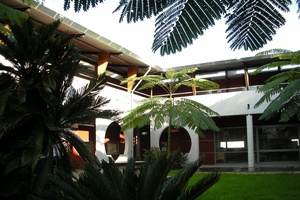
AMH: Tell me about the big fight Urban Auckland had against the Ports of Auckland around two years ago.
JS: Ports of Auckland has always been an issue for us. You just have to look at the historic plan of Auckland to see they’ve taken over more and more of the harbour, but most people are not aware of it. Adam Mercer from the Auckland Architecture Association raised the alarm bells around their outrageous proposal to extend the Bledisloe Wharf by nearly 170 metres into the harbour, a few years before. So we weren’t surprised at their next attempt to force an expansion into the harbour.
Initially, we just put out flyers and gathered 30 people together for a protest on Queen’s Wharf that the press attended. It escalated from there – we put on another protest with more friends and family involved and made Stop Stealing our Harbour banners – we had to make a noise and get noticed!
When the council and mayor Len Brown continued to insist that their hands were tied, I quickly became aware that the only path was legal action. Urban Auckland is just a small group but we have a fund of money to spend on court cases that we’ve built up over the years, so we got our legal team together and slowly built a case with them.

AMH: It must have been an amazing feeling to emerge victorious.
JS: It was fantastic to see that headline: ‘Activists win victory’! People came to the protests from all over Auckland and they were from every political persuasion and every financial strata, they just cared about their harbour. The harbour itself was not actually protected in the planning process and we managed to rectify that with the new Unitary Plan objectives.
A great thing about the super city is that it’s all one city now and the Waitemata harbour is our heart. Sadly it is still inadequately protected. This issue has come up again with the America’s Cup Bases, where Panuku wanted to take 220 metres of the harbour for a concrete wharf, instead of using the Cup event to start long term redevelopment of Wynyard Point. The harbour is our legacy. No more reclamation.
AMH: What would you improve in Auckland first, if constraints and budget were no issue?
JS: We’re having a big rethink about cars, so public transport is a huge part of that but on the built environment side, compact urban villages is something that’s really dear to me – how to get people living well together in an environment where it’s easy to go out and enjoy spaces. It’s so important to make places and buildings where people want to be.
AMH: You’ve been teaching at Auckland University for a year now, what are you focusing on there?
JS: One of the reasons for stepping back a bit from the office was so I could do other things like the teaching, because I’m interested in developing urban ideas. Last year Auckland University offered me a position as a Professional Teaching Fellow. I’m involved in bringing urbanism into architecture and being a crossover to urban design, because UoA now offers a conjoint degree and bridging those two disciplines is important.
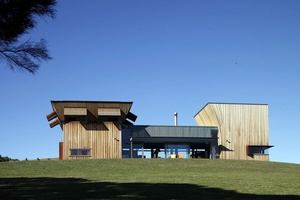
AMH: How have students studying architecture today changed from your time in school?
JS: Students are always interesting. The student body has changed enormously since I went through – it used to be nearly all a bunch of white Pākehā kids, mainly boys, from the provinces! Looking at the diversity of the students today is mind-boggling. We have students with backgrounds from China, India, all over Asia, Europe – all with completely different cultural journeys.
AMH: It’s great to hear it’s getting more diverse, I think that is really important for the profession. You’ve been part of Architecture + Women NZ for many years, what sort of changes have you seen around the state of women in architecture? Are we becoming more inclusive?
JS: I certainly think so, there’s definitely a lot more women architects, which is fantastic. I’ve always had great support from other architects, both male and female, it’s a very collegial environment. I think the important thing is that we all keep supporting each other. The big issue for women is having families. I ducked that one by choosing to go sailing!
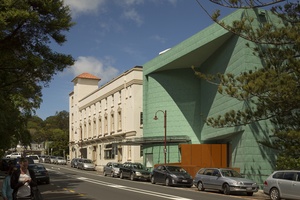
I think it’s tough for men too, I’m not sure whether the health and safety changes have helped that but you have to start looking at the bigger picture of people’s lives and work/life balance and how you can support them as a practice.
AMH: Do you think practices are getting better at that, supporting parents?
JS: Bigger practices are being a lot more supportive. I think that they realise that they have to. It’s one of those conundrums, as women are often in smaller practices and they have to do so much more work, so it gets harder for them to manage their practice plus kids. I don’t know how they do it!
It’s much harder to be a smaller studio now anyway, you need multiple skill sets. I think that practices are generally getting bigger. A more cooperative style of working where you share talent, not just resources, is a good thing.
AMH: Lastly, you’ve been awarded many medals and accolades in your long career – most recently you were honoured as a Distinguished Fellow by the NZIA. What do you feel is your biggest achievement thus far?
JS: Just getting here, surviving! I realise how lucky I am to do what I love, to be an architect and work with the people I have. I would recommend architecture to any kid, because you can be involved in your environment and you can make a difference on so many levels.



